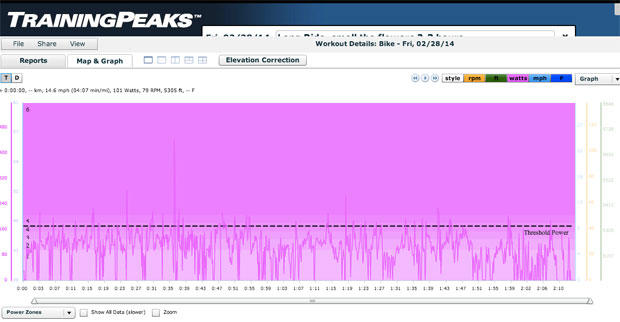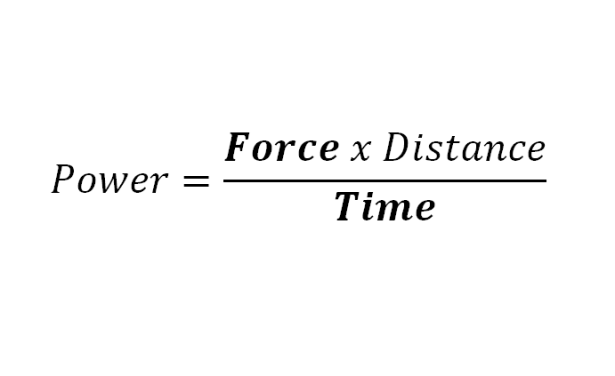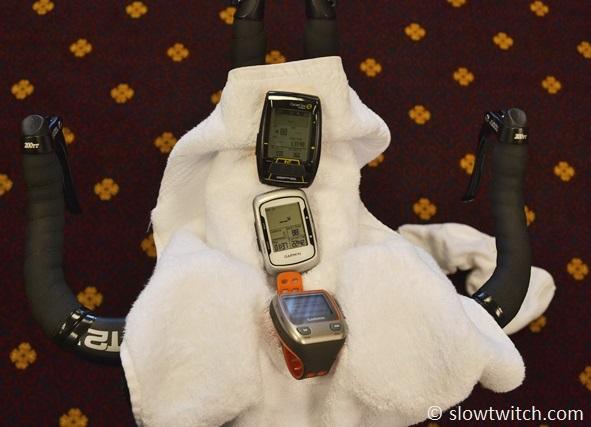How to Analyze a Power File
As the editor at TrainingPeaks until this February, I worked closely with our team of power experts to create pro power analyses for races like Kona, Ironman Melbourne, Ironman 70.3 St. George, as well as some high-profile ITU and XTERRA races. Pros whose files we analyzed included Pete Jacobs, Frederik Van Lierde, Craig Alexander, Rachel Joyce, Meredith Kessler, Luke McKenzie, and many more. These were published as analyses on our own site as well as contributed to other sites and publications like Slowtwitch.
I learned a ton from our knowledgeable experts, and over time I saw that while every analysis highlights different things, there are certain components that crop up over and over again in a triathlon power analysis. These can be distilled down into five general sets of observations that can tell you the majority of the useful information you need to know about the ride. If you want to start analyzing your own race files, here are the key numbers to hone in on.
NP and VI
Dr. Andrew Coggan derived Normalized Power (NP) because it's a better indicator of an athlete's effort than average power. You may have heard people say that Normalized Power (NP) for an effort is the estimated power output you could've maintained for the same physiological "cost" if you held a steady output the entire time. According to Coggan, this is because the demand on your energy systems, in terms of muscular fatigue, glycogen expenditure, lactate production, and stress hormone levels, don't increase linearly with intensity. In short, the more high-intensity surges or "jumps" you have in your ride, the faster you'll fatigue.
Let's say you have two rides, both of which result in an average power of 200 watts. During the first ride, you achieve a 200-watt average by coasting often, but then accelerating hard out of your coasting. During the second ride, you hold 200 watts constantly. The second ride will "feel" easier and you will tire less quickly, even if the two rides result in the same average power. Your NP for the first ride, however, will be higher than 200 watts, because the NP algorithm will weight those surges more heavily.
Analysts may go back and forth between quoting average power and NP for specific segments, but what's most interesting in the case of triathlon is the variance between your NP and average power. The ratio of NP divided by average power is called Variability Index (VI). The closer your VI is to 1.0, or the more similar your NP and average power, or the "smoother" your power output was.
VI is one of the first numbers noted in triathlon power file, because a lower VI typically means a smoother ride, and fresher legs for the run. Joe Friel likes to see a VI of less than 1.05 for a long course bike on a relatively flat course (more hills means higher VI). For some reference, Frederik Van Lierde's winning power file from last year in Kona showed a VI of 1.03, and age group winner Kyle Buckingham managed a VI of 1.02. A cycling road race, on the other hand, where riders alternate between coasting in the draft and surging with the attacks, can result in a VI of 1.2 or higher.
Friel notes that due to the way NP is calculated, the longer the segment, the more meaningful NP and VI becomes. In general, he would not consider NP for segments shorter than five minutes, and TrainingPeaks won't calculate NP for segments shorter than 30 seconds because the algorithm averages data over a 30-second period.
IF and TSS
Next you'll want to look at how hard you went. Did you go hard enough to race your fastest bike split, but not so hard that you blew up on the run? The answer to this question lies in your Intensity Factor (IF), which is a function of your Functional Threshold Power (FTP). Your FTP is approximately the power output you can maintain for a one-hour, all-out time trial.
IF is calculated as NP divided by FTP, or in other words, it's the percentage of your individual FTP that you maintained, on a normalized basis. The pros will usually target an IF between 0.75 to 0.80 in an Ironman bike, meaning that they will try to hold about 75% to 80% of their FTP. For a 70.3 race, this figure rises to a range of 0.85 to 0.90 IF for the pros.
Most age groupers can and should not race as intensely. Age group Ironman bike IF generally ranges from 0.6 to 0.7 for most, higher for more competitive age groupers, lower for novice or slower athletes.
So where should you fall on that spectrum? The second piece of this puzzle is your Training Stress Score (TSS). TSS is an estimate of the workload of a session, based on the intensity and the duration of the session. It's calculated:
IF^2 x 100 x [duration in hours] = TSS
A 1-hour, all-out time trial effort at FTP results in 100 TSS.
(1.0 x 1.0) x 100 x 1 hour = 100 TSS
Another example that's more illustrative, a 5.5-hour effort at an IF of 0.7:
(0.7 x 0.7) x 100 x 5.5 hours = 270 TSS
According to Friel's guidance, a bike that results in more than 300 TSS will probably lead to a blow-up on the run, but anything much lower than 250 to 270 TSS may mean you left something on the table. Because TSS is so largely determined by duration, the slower you are on the bike, the lower an intensity you will need to ride to stay under that 300 TSS mark.
This is explained in an excellent piece by Friel, accompanied by a table credited to Rick Ashburn that lays out a range of target Ironman bike IF depending on your experience level. Use the table to back into the IF and thus the target power you need to hold for your Ironman bike based upon your estimated bike split and target TSS. Did you blow up on the run in your last Ironman? Check your IF and TSS, and whether you need to dial down the intensity. See the full article on target IF and TSS here.
You'll note that IF and thus TSS are both functions of your FTP. To get an accurate IF and TSS, you have to have your FTP entered accurately into your analysis software, which also means you need to be testing your FTP regularly and making sure your power zones are up to date.
First vs. Second Half Pacing
Another key analysis that is often performed is to assess overall pacing by comparing average or normalized power for the first half of the race vs. the second. For age groupers, Friel says, "Assuming the rider is doing a time trial or triathlon on a flat course I'd like to see the second half have a power that is about 1-2% greater than the first half. That would mean the athlete held back in the first quarter of the race and remained focus on the third quarter which is when the greatest drop off usually occurs when going out too fast." For the pros, first-half power is often higher as they jockey for position at the start of the bike. Generally, when we saw a drop off in power of 10% or less between the first and second half of a pro Ironman power file, we considered it a pretty well-paced race.
There are some caveats to this. Consider the terrain, as a course that is primarily uphill in the first half and downhill in the second, for example, may result in a larger drop off in power that has more to do with the course than a pacing strategy. Secondly, consider the effects of changing conditions like wind. In Kona 2013, for example, though conditions were historically calm, analyst AJ Johnson noted in an article written for Ironman.com that competitors still had a light tailwind on the way out and a headwind on the way back. This, along with the competitive dynamic of the race, may have contributed in part to lower average power in the first half of the race for Luke McKenzie, who held 277 watts on the way out and 285 watts on the way back (his goal for the race was 290 watts). The fact that he was able to maintain a higher output on the way back, however, still indicates excellent pacing and ability to hold himself back a bit during the first half of the bike.

In addition to matches, look at how much time you spend significantly above your target power output — about 20% or more. An effort that much higher than target wattage for extended periods pushes an athlete into a mode of higher glycogen utilization and rate of fatigue, and an athlete can only "go into the red" so many times over the bike course.
Some examples: in 2012 at Kona, analyst Dan McIntosh counted four matches in Michael Lovato's bike file, and observed that Rachel Joyce spent 45 minutes of her bike "in the red", that is, 20% or more higher than her target power output. Also consider that in the same year, Pete Jacobs managed the fastest bike split of the day by elevating his NP by less than 6% over his overall NP for the whole ride during the 17-minute climb up Hawi.
Look at your the climbs and other harder efforts in your power file. How much did you exceed your target wattage? Did you pay for it later in the race?
Cadence
There really is no "right" cadence — pro power files show average rpm of anywhere from the mid-70s to the low-90s — so what information can you gather from analyzing cadence?
First, you can take a look at the amount of time spent coasting. In cycling, Hunter Allen has said that in order for a rider to win a road race, he or she must spend at least 15% or more of the race not pedaling, riding in the draft and conserving energy. In triathlon, however, the goal is to ride an evenly-paced, steady bike with minimal coasting and subsequent surging. The pros typically spend much less than 10% of their total time on the bike coasting. They keep their cadence and their power up on the descents. At 70.3 St. George last year, for example, Johnson noted that Branden Rakita spent only 2% of his ride not pedaling.

To derive your time spent coasting within TrainingPeaks Premium or WKO+, use the Cadence Distribution chart (not yet available in TrainingPeaks Beta), and add up the percentage of time spent at 45 rpm and below. See the example below — hover over the bars for the first four bins on the left to see and add up the percentages.
Some analysts will also note instances in which cadence would peak and power would drop to zero, indicating the rider was out of gears and spinning out. McIntosh for example, observed this in his 2012 analysis of Pete Jacobs' winning file at Kona, where Jacobs' 54-tooth chainring forced him to spin out at 120+ rpm on the descent from Hawi.
These are just five basic steps and a starting point for what to look at in not only your race files, but also key training rides. Is there more to power analysis? Of course. Experts like Jim Vance have delved into some advanced analysis tools like Quadrant Analysis (see his analysis of McKenzie's evolution from 2012 to 2013), and you can zero in on the interesting details and race dynamics as was done by McIntosh in looking at Matt Chrabot's transition skills in this 2012 ITU San Diego power analysis. As you look at more and more files, you'll get better at spotting these details, too. But for now, you can gather a wealth of useful information from looking at just a few key sets of numbers. And when you start to use this information to make changes to your training and racing strategy, you'll really begin to see the returns on this powerful tool.



